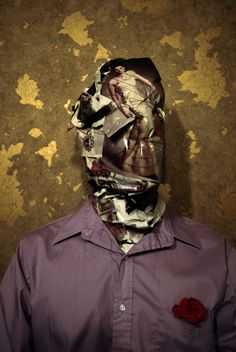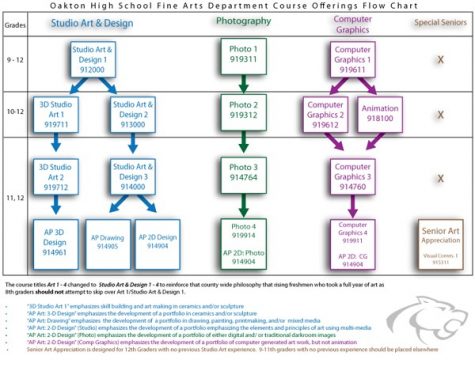An Artist Within
The Fine Arts program at Oakton High School welcomes aspiring artists and creative minds alike, as well as the very students who claim that they cannot draw. Because it is assumed by many that art is only a skill exclusively for the naturally talented, the ones who stray from the subject often believe that one either has creativity or doesn’t. Creativity, according to psychologists, is, in fact, a skill that can be learned by anybody.
“I’ve taken a look at the portfolios of the students who received a 5.0 on their AP exams, and the works I’ve seen immediately got me thinking hard,” said Ms. Conley, Studio Art and AP Art History teacher. “It’s all about visual communication.”
The portfolio, as a part of the AP exam, is divided into three parts: Concentration (12 pieces), Breadth (12 pieces), Quality (5 Pieces). A Concentration is a series of pieces that are related to a specific theme and subject matter, which is thematically interpreted by the College Board and scored based on its approach to composition, elements, and the principles of design. A Breadth, on the other hand, is a variety of works that demonstrate mastery of drawing and an understanding of the principles of design. Finally, the Quality includes works that exhibit the synthesis of form, technique, and content. Though challenging, AP 2D, Photography, and Drawing allow students to express their thoughts and emotions through new ideas and expressions, giving them a vastly more powerful repertoire for self-expression. A few of the concentration pieces that were created by 5-scoring AP students last year are shown below, and more can be found on the College Board’s website.
AP Art: Drawing

AP Photography

AP 2D

AP Art is designed for highly motivated, advanced art students who have demonstrated a serious interest in the study of art. It is, therefore, recommended that students who are not taking the subject very seriously take the courses at an easier level, where they are expected to improve and expand their artistic understandings and skills by using creative processes.
An education in the arts helps students gain powerful tools for understanding both past and present human experiences, learning to adapt to unfamiliar ways of thinking and working, and making decisions where there are no standard answers. Furthermore, the practice of painting explores modes of expression and allows access to some parts of the human brain that have not been accessed before, thereby potentially changing the lives of students. Though some may say otherwise and are quick to underestimate its value, art is an educational stimulus, a tranquil regime, and a highlighted therapeutic technique that welcomes students from any experience or background, and encourages them to express and understand emotions with paints, chalks, markers, and any type of media. Working in the arts can thus influence different ways of thinking, both from the artist and those who come to view various media

Shown here is a flowchart of Oakton’s Fine Arts Department course offerings. Although it is constructed within prerequisites, students who feel that they are prepared to take an art class at a higher level can speak to either Ms. Conley (Drawing), Ms. Silva (Photography), or Mr. Hatchl (Graphic Design) and their guidance counselor, who will collectively determine the appropriate placement of a student into any of the provided classes upon a careful examination of his or her works.
I’m a high school senior and aspiring journalist, and this is my first year as staff member of the Oakton Outlook. As a student who has always been very...







Artin | Dec 1, 2016 at 8:36 pm
I wished students had the opportunity to hear these words from their counselors